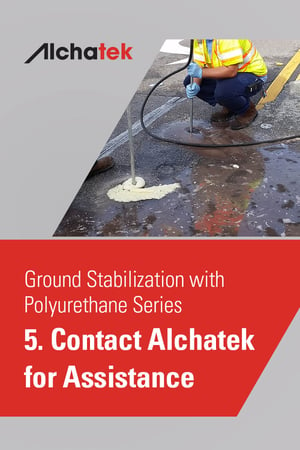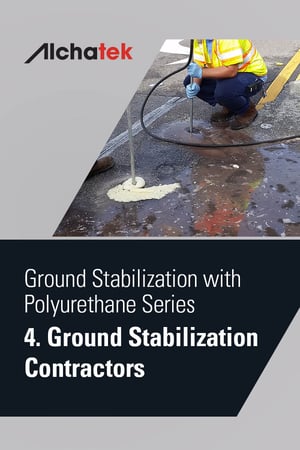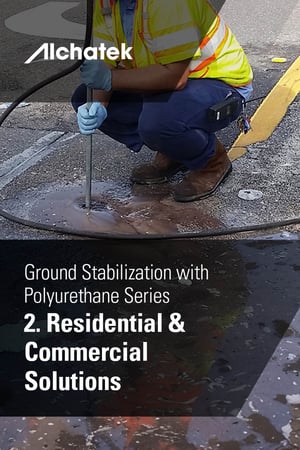 Essential Details
Essential Details
Dates/Pricing
Slab Lifting Masterclass: April 15th & 16th, 2024 – $685.00
Public Works Infrastructure Repair: April 18th & 19th, 2024 – $685.00
Location
Spray Foam Systems
1502 Airport Rd.
Greensboro, GA 30642
Click Here for Directions
Discount
Register for both classes and get a 25% discount
Slab Lifting Masterclass: April 15th & 16th, 2024 – $685.00
The concrete lifting master is an intensive opportunity to learn what it takes to start a concrete lifting business and then take it to the next level. The training you will receive will include Safety, Site Evaluation, Estimating, Product Selection, Sales, Equipment, Concrete Lifting Techniques, and Deep Lift / Deep Lock. You will also learn about taking your concrete lifting business to the next level. You will learn about other tools we have to help you land bigger jobs and how to engage the engineering community to gain access to unique markets. Join the industry’s top team of concrete lifting professionals for training, learning, and fun.Public Works: April 18th & 19th, 2024 – $685.00
The public works course is two days dedicated to training and teaching Public Works professionals and specialty grouting contractors. You will learn how to utilize polyurethane technology to solve problems that municipalities and public works departments commonly face and how to do it at a fraction of the cost of traditional methods. There will be a heavy emphasis on sealing underground infrastructure and stabilizing and lifting roads. We will cover the full spectrum of our product line including Leak Seal, Permeation, Soil Stabilization, and Slab Lifting. Join the industry’s top team of infrastructure specialists for training, learning, and fun.







 Each ground stabilization project is unique. The Alchatek support team is skilled in assessing different challenges and devising solutions tailored to specific requirements, whether for residential, commercial, or industrial purposes.
Each ground stabilization project is unique. The Alchatek support team is skilled in assessing different challenges and devising solutions tailored to specific requirements, whether for residential, commercial, or industrial purposes.

 Choosing the right contractor for ground stabilization using polyurethane is a critical decision that directly impacts the success and longevity of your project. This guide provides essential tips to help you select the most qualified professional for your needs.
Choosing the right contractor for ground stabilization using polyurethane is a critical decision that directly impacts the success and longevity of your project. This guide provides essential tips to help you select the most qualified professional for your needs.
 Ground stabilization extends beyond soil to include rock and gravel, crucial for various construction and infrastructure projects. Polyurethane foam, with its expansive and adhesive properties, is an extremely effective solution in these challenging environments.
Ground stabilization extends beyond soil to include rock and gravel, crucial for various construction and infrastructure projects. Polyurethane foam, with its expansive and adhesive properties, is an extremely effective solution in these challenging environments.
 Polyurethane ground stabilization is a proven solution that has been successfully applied in countless real-world scenarios. From fixing residential driveways to supporting the foundations of commercial and municipal buildings, polyurethane foam offers a versatile and dependable approach to ground stabilization.
Polyurethane ground stabilization is a proven solution that has been successfully applied in countless real-world scenarios. From fixing residential driveways to supporting the foundations of commercial and municipal buildings, polyurethane foam offers a versatile and dependable approach to ground stabilization.
 In the world of construction and infrastructure development, the quest for stability is paramount. Whether you're a property owner, manager, or builder, ensuring that the ground beneath your structures is solid and dependable is crucial.
In the world of construction and infrastructure development, the quest for stability is paramount. Whether you're a property owner, manager, or builder, ensuring that the ground beneath your structures is solid and dependable is crucial. 
 Alchatek, with its expertise in commercial property maintenance, stands ready to provide comprehensive support in addressing your concrete slab needs.
Alchatek, with its expertise in commercial property maintenance, stands ready to provide comprehensive support in addressing your concrete slab needs.

 After identifying issues with concrete slabs in your commercial property, the next step is choosing the right repair method. The post-holiday slowdown offers the perfect timing for such repairs, and understanding the available solutions is key to making an informed decision.
After identifying issues with concrete slabs in your commercial property, the next step is choosing the right repair method. The post-holiday slowdown offers the perfect timing for such repairs, and understanding the available solutions is key to making an informed decision.
 After a bustling holiday season, commercial properties may be left with more than just the usual wear and tear. One critical but often overlooked aftermath is the potential damage to concrete slabs. One thing is certain, ignoring the problem is a lot more expensive than doing something about it.
After a bustling holiday season, commercial properties may be left with more than just the usual wear and tear. One critical but often overlooked aftermath is the potential damage to concrete slabs. One thing is certain, ignoring the problem is a lot more expensive than doing something about it.